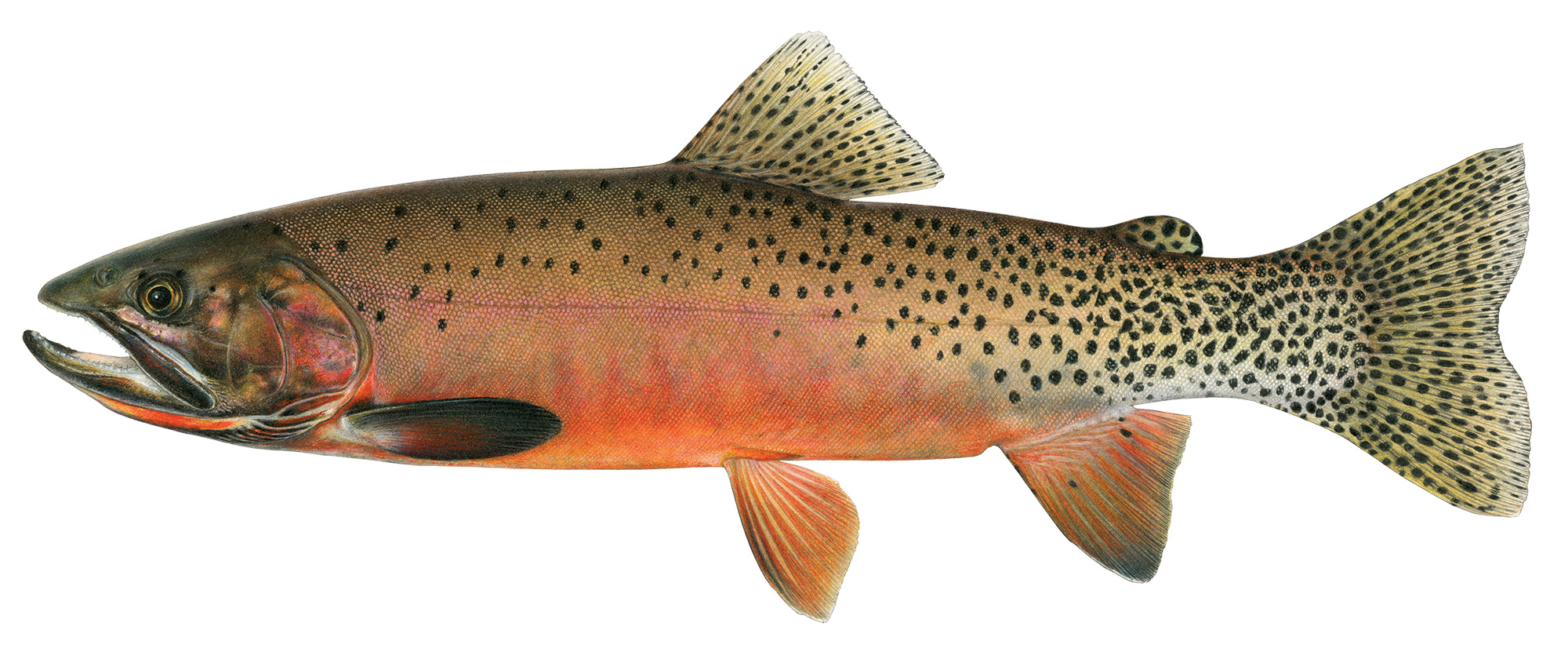
15 Feb Icon of the Rockies
I EXPERIENCED MY FIRST PERSONAL ENCOUNTER with a cutthroat trout during innocent times. I was still a kid, girls were still yucky. “Gunsmoke” and “Leave it to Beaver” were playing on television. The Yankees were leading the American League. Eisenhower was president, and the scariest person in the world was fat, bald Nikita Khrushchev, carrying on like someone’s drunken uncle at a family reunion.
Fly fishing reflected that innocence. Royal Wulffs and goofus bugs were considered sophisticated patterns, tied for buoyancy and visibility rather than resemblance to any living insect. Fly lines’ weights and tapers were defined by incomprehensible triplets of coded letters that looked like DNA sequences. My Shakespeare glass rod — probably the equivalent of a 5-weight — was the envy of my friends. My father and I could fish the best waters in Montana for days without seeing another angler.
One afternoon, we hiked up the Middle Fork of the Flathead on the Glacier Park side of the river. Once we were free of West Glacier’s bustle (which wasn’t much bustle by today’s standards), we split up and started to fish. Standing on a rock overlooking a pool so deep I couldn’t see its bottom, I began to cast a bulky dry fly upstream into the current. Several casts later a golden shape appeared from the depths, rising slowly and backing downstream on a vector perfectly designed to intercept my fly. Then it surged to the surface and struck. In retrospect, it’s remarkable that I didn’t pull the fly right out of its mouth.
The fight — and the fish was big enough to call it such without hyperbole — required a precarious scramble down the face of the rocks that led to my total immersion in the river. But I did land the fish, and what I remember most as it came to rest on my outstretched hand was its remarkable appearance. I’d caught plenty of brookies, rainbows, and browns before, but this was piscine beauty of another order: flanks of hammered gold, a blush of pink on the belly and gill plate, perfect black spots that could have been painted in India ink, the deep orange slash marks on its throat that give the species its name.
I may have hooked the fish, but the fish had just as surely hooked me.
A Brief History of Cutthroats
On June 13, 1805, near the Great Falls of the Missouri River, Private Silas Goodrich, the angling fanatic of the Lewis and Clark expedition, returned to camp as described by Lewis in his journal:
Goodrich had caught half a dozen very fine trout … These trout (caught in the Falls) are from sixteen to twenty-three inches in length, precisely resembling our mountain or speckled trout in form and the position of their fins, but their specs are of a deep black instead of the red or gold color of those common to the U. States. These are furnished long, sharp teeth on the palate and tongue, and generally a small dash of red on each side of the front ventral fin.
While this description is generally accurate, Lewis made an uncharacteristic error regarding the location of the “small dash of red,” which is located on the inferior margin of the gill cover. His “mountain or speckled trout” is no doubt the brook trout, which is actually a char.
While the cutthroat went through a confusing series of name changes following this initial description, most paid homage to the leaders of the Corps of Discovery. The naturalist George Suckley named the species for Lewis in 1853. In 1898, David Jordan and Barton Evermann reversed course and named the fish Salmo clarkii. The cutthroat (along with the rainbow) remained lumped in the same genus as the brown trout and Atlantic salmon until 1989, when DNA studies confirmed that cutts and rainbows derived from the Pacific salmon family. Now the cutthroat is officially Oncorrhynchus clarkii.
Variations on the Theme
The historic range of the cutthroat ran from Southern Alaska to Northern California, on both sides of the Continental Divide. Given the diversity of habitat this huge swath of geography contains, the evolution of multiple subspecies should come as no surprise. Today, scientists recognize 14 subspecies of cutthroat, although that number remains controversial. At least two are extinct and several more are threatened. Some are difficult to tell apart, but others are distinct in appearance and habits.
The coastal cutthroat (O. c. clarkii) enjoys a unique lifestyle. Native to streams along the Pacific coast, this is the only cutthroat that migrates back and forth between fresh water and the sea. I caught them regularly when I lived in Alaska’s Southeastern Panhandle. Although sea-run cutts rarely exceed 16 inches in length, they are lovely, sporty little trout that demonstrate the extra vigor all anadromous fish offer on the end of a fly line.
The Lahontan cutthroat (O. c. henshawi) of Eastern California and Western Nevada is noteworthy for its size. In vintage photographs showing wagonloads of them being hauled off to market, the fish look like salmon. Lahontan cutts from Pyramid Lake, Nevada, have dominated record book entries for the species for years, topped by a 41-pound specimen taken in 1925. Unfortunately, development and other environmental factors have not been kind to our largest cutthroat, which was listed as threatened in 1975.
Montana is home to two cutthroat subspecies. The westslope cutt I caught from the Flathead almost 60 years ago pays tribute to both Corps of Discovery leaders in its name, O. c. lewisi. The Yellowstone cutthroat, O. c. bouvieri was named for an Army captain in 1883. The two can be difficult to distinguish, especially since they often hybridize. Westslope fish generally have more, smaller spots around the tail, while Yellowstone cutts have larger spots and tend to have more gold and copper hues on their bodies.
A Candle in the Wind
Now that the headwaters of the Missouri and Yellowstone have become internationally recognized as premier fly-fishing destinations, it can be hard to remember that the browns and rainbows that made these waters famous don’t really belong there. Both were imported — the browns from Europe and the rainbows from west of the Continental Divide. The cutthroat is the only trout native to the area.
The introduction of non-native trout may have been good for the fishing, but it hasn’t been good for cutthroats. Browns tolerate a wider range of water temperature and clarity. As stream temperatures rise and water quality declines due to development and irrigation, cutthroats cannot compete successfully and their range becomes limited to small headwater streams. Furthermore, the more aggressive brown trout simply eat a lot of small cutthroats. Meanwhile, the rainbows are busy loving cutthroats to death. The two species readily interbreed, and over time the resulting “cutbows” look a lot more like rainbows and a lot less like cutts. The result is that genetically pure cutthroats are becoming a fish of the past.
Neither of these subspecies is currently listed as threatened or endangered by the U.S. Fish and Wildlife Service, although petitions to do so have been filed on behalf of both. The impact of hybridization became a contentious issue in these decisions. The Montana Department of Fish, Wildlife and Parks has named both subspecies Fish of Special Concern. That concern remains particularly high for the westslope cutthroat, which has been extirpated from much of its historic range east of the Continental Divide.
The Yellowstone cutt faces special problems. As its name implies, the heart of this beautiful fish’s natural range lies in the upper Yellowstone drainage, and Yellowstone Lake has long been famous for its cutthroats. In 1994, a recreational angler caught a non-native lake trout there. Biologists concluded that the fish was the result of an illegal introduction during the 1980s.
The lake trout population subsequently exploded. Unfortunately, the lakers’ predominant food source is young cutthroats. Population monitoring studies soon revealed a major decline in the cutthroat population. The park began an active program of culling lake trout by intensive gillnetting (using means designed to minimize by-catch of cutthroats), and by requiring sport anglers to kill every lake trout they catch. These programs have resulted in the removal of nearly 2 million lake trout, each one of which was projected to kill some 40 Yellowstone cutts annually. Even so, cutthroat populations have not stabilized. Biologists estimate that the lake’s cutthroat population may decline to less than 10 percent of its historic carrying capacity.
The consequences of this ill-advised experiment in “bucket biology” extend beyond cutthroats. A number of predators and scavengers — including bears and raptors — rely on cutthroats spawning in the lake’s feeder streams as an important summer food source. Because lake trout spawn in deep water, they do not provide an alternative.
Value Beyond Words
My wife, Lori, and I are hiking up a small mountain stream densely lined with tamaracks, spruce, and willow. We are 3 miles from the nearest road and a lot farther than that from anything that could be called a population center, even by Central Montana standards. We’ve slogged back and forth across the stream wherever doing so offered the most convenient route, and I’m soaked up to my knees and beyond. The close quarters and gurgling current make the creek look like an ideal place for a tenkara rod, one of the few articles of fly-fishing tackle upon which I have yet to squander our children’s inheritance. The creek also looks like a great place to catch native mountain cutthroats.
When we finally reach a series of tiny pools that look just right, we stop and break out our pack rods. Cutthroats in backcountry water aren’t hard to catch, and I’ve dug up a box of vintage dry flies for the occasion, patterns that don’t differ much from what I used to catch my first cutt. Out of respect for the fish, we’re using small hooks, and I’ve double-checked them all to be sure I’ve crimped the barbs down. It is illegal to retain cutthroats in many Montana waters. This is not one of them, but it should be. We have not come today in search of dinner.
The cutthroat’s enthusiasm for surface flies is an important element of their angling appeal. Browns may be warier and rainbows stronger, but I’d rather catch an 8-inch cutthroat on a dry fly than another trout twice that size on a nymph. The rationale behind this opinion is difficult to articulate. Perhaps you have to see it happen for yourself.
Lori’s up, and when her first false cast winds up in the brush behind her, I start thinking about that tenkara rod again. But she’s back in action quickly, reminding me that following the course of a dry fly on someone else’s line as it bobs down the current is just as much fun as watching one on the end of your own line. Then the big white glob of calf hair on her Royal Wulff disappears in a miniature geyser of water. There’s no point in trying to apply the word “fight” to what happens next. Moments later, we’re pausing briefly to admire what I still think is the prettiest fish in North American fresh waters, even after all these years. Then I bend down with my hemostat, give the hook a flick, and send the fish back where it came from.
It soon becomes clear that we can catch as many of these fish as we want to, which turns out to be not many at all. Today the cutthroats were mostly an excuse to hike into a place few people ever visit, and perhaps that’s what made them special. Something certainly did, and I am not alone in that opinion. Seven Western states — Montana, Idaho, Wyoming, Colorado, New Mexico, Nevada, and Utah — have named the cutthroat their state fish; the last four states on that list have honored a specific subspecies. Out here, that degree of consensus is seldom seen in regard to anything.
Leave it to the cutthroat, a true icon of the West.
Cutthroat Throughout the West
While certain subspecies of cutthroat can be hard to distinguish from one another, the color and pattern variations between others is striking indeed.
- YELLOWSTONE CUTTHROAT O. c. bouvieri
- COASTAL CUTTHROAT O. c. clarkii
- LAHONTAN CUTTHROAT O. c. henshawi
- ALVORD CUTTHROAT O. c. alvordensis
- COLORADO RIVER CUTTHROAT O. c. pleuriticus
- BEAR LAKE CUTTHROAT O. c. utah
- SNAKE RIVER CUTTHROAT O. c. behnkei
- GREENBACK CUTTHROAT O. c. stomias




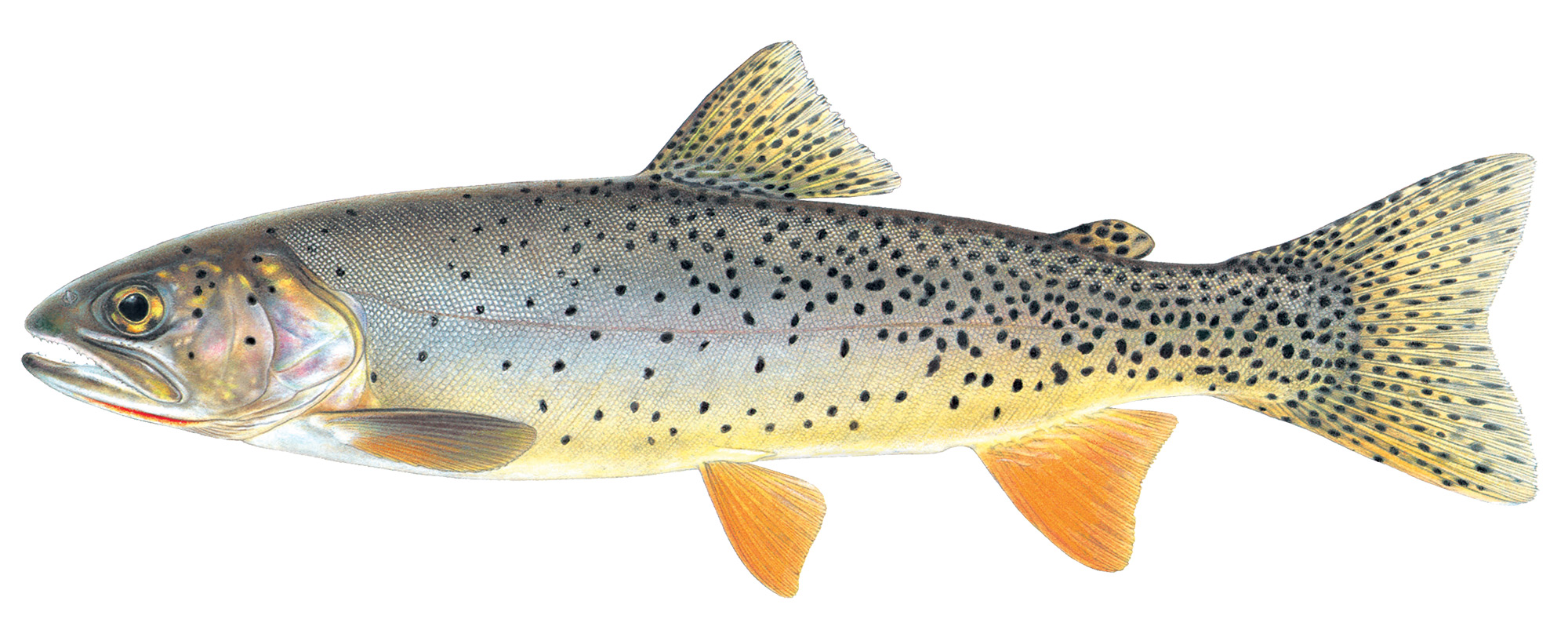
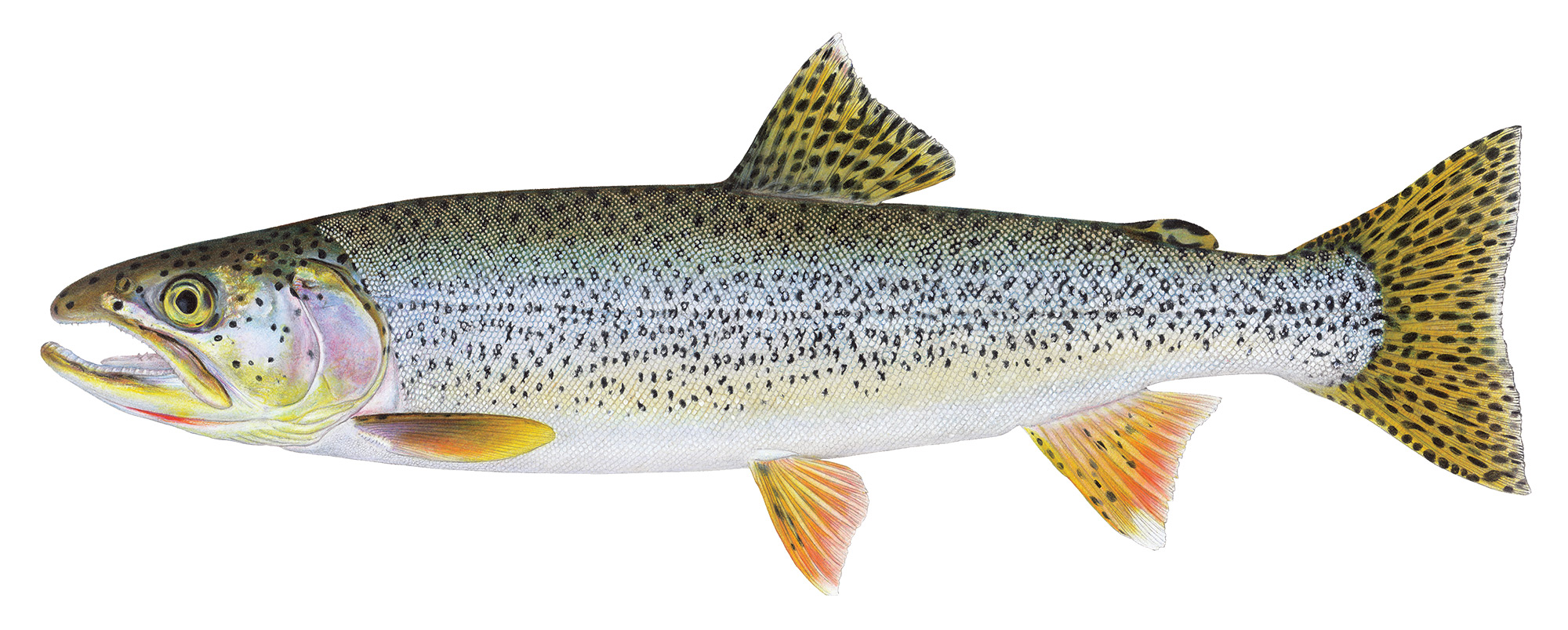
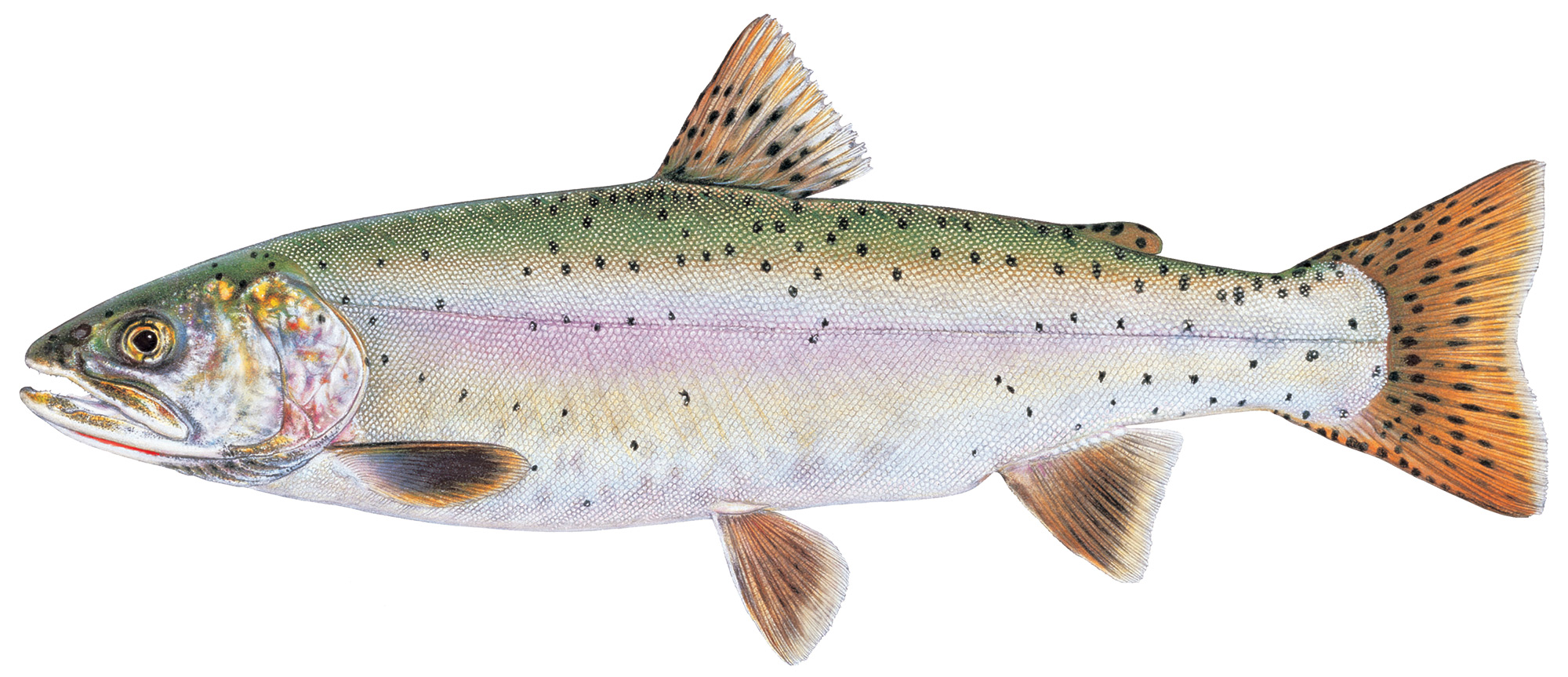
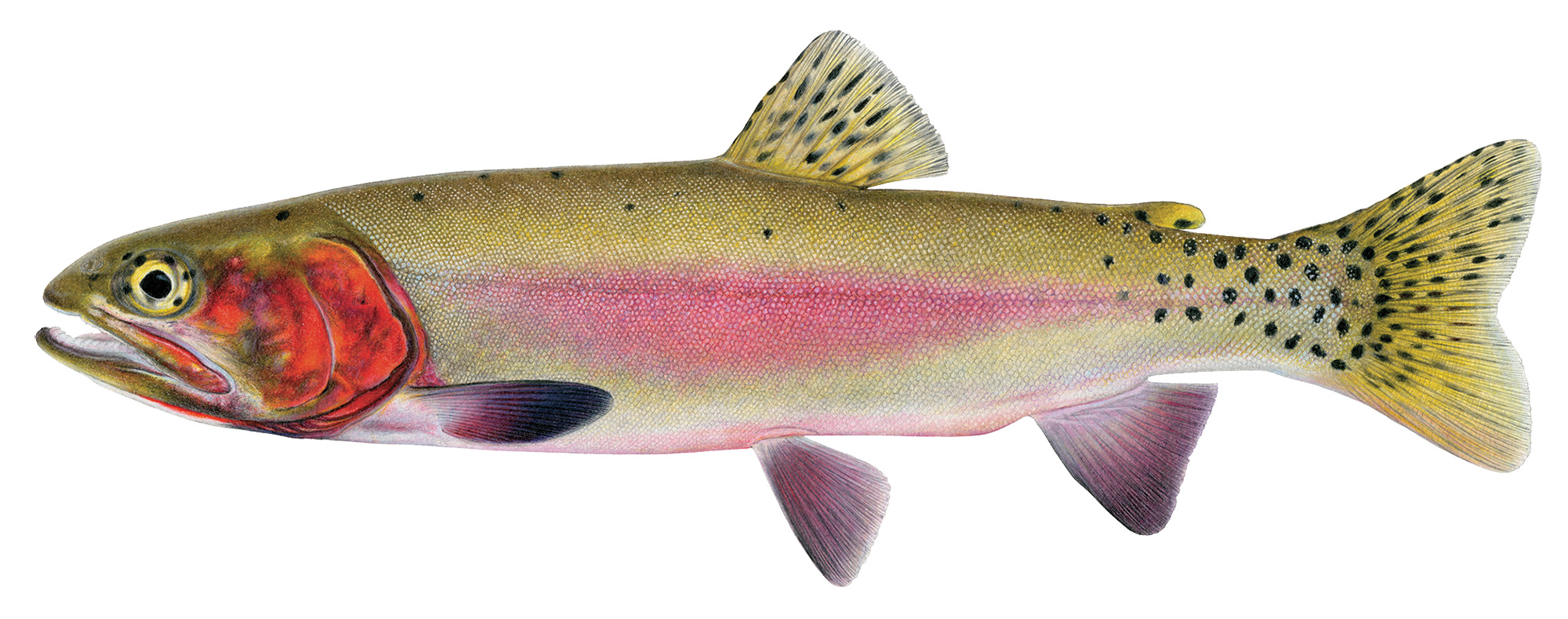
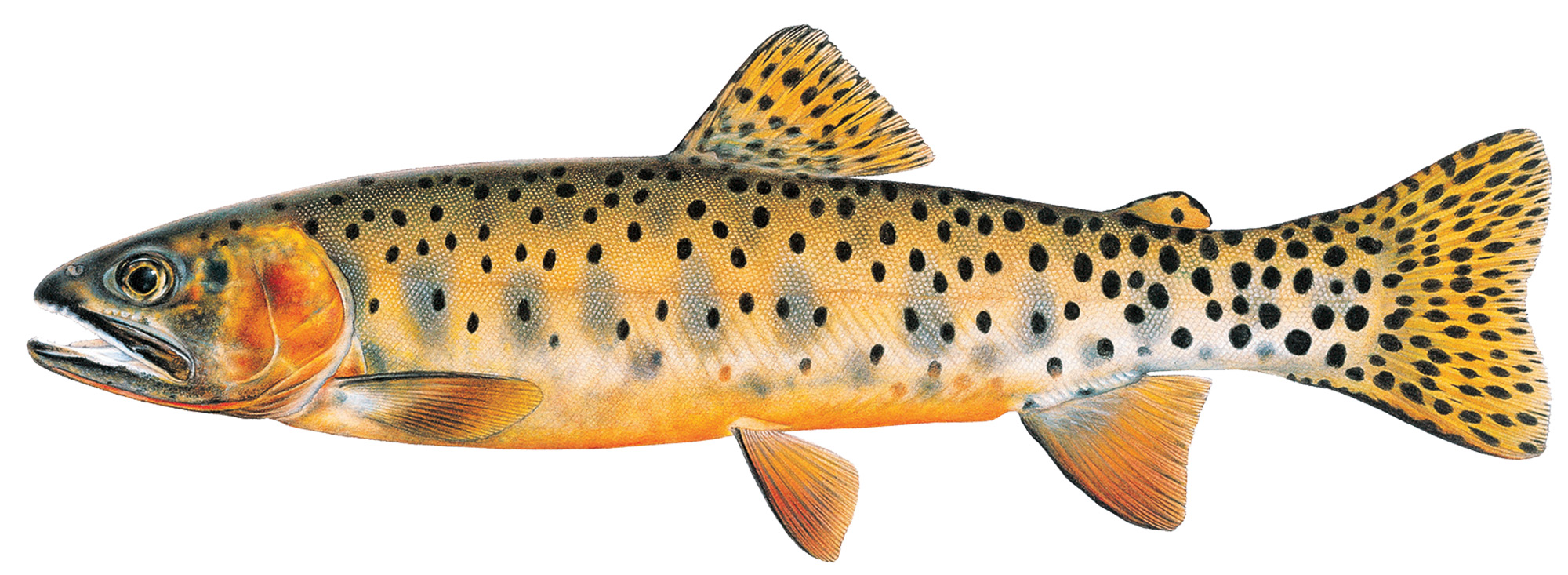



No Comments